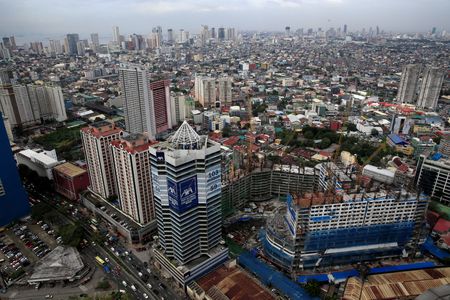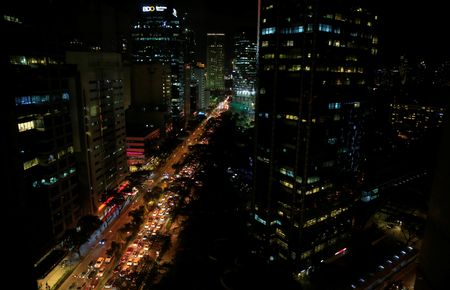By Neil Jerome Morales and Enrico Dela Cruz
MANILA (Reuters) – The Philippine economy ended 2022 with the fastest growth in over four decades underpinned by a robust final quarter, but analysts and policymakers warn that a global slowdown and soaring inflation will make for a difficult year ahead.
Manila’s fourth quarter forecast-beating annual growth of 7.2% reported by the statistics agency compared with the 6.5% pace expected in a Reuters poll, and brought full-year expansion to 7.6%, the fastest since 1976 and above the government’s target of 6.5 to 7.5%.
Economic Planning Secretary Arsenio Balisacan attributed the stellar fourth-quarter performance to strong domestic demand, rise in jobs, and “revenge” spending following the lifting of pandemic curbs and full reopening in the last three months of the year.
“We are confident that we will remain in our high growth trajectory,” Baliscan told a media briefing on Thursday.
He said China’s reopening will be a boon for the Philippine economy, while protecting the purchasing power of Filipinos and ensuring food security would remain priorities for the government as the public grapples with high inflation.
On a quarter-on-quarter basis, GDP growth came in at 2.4% in October-December, compared with expectations for a 1.5% rise and the previous quarter’s upwardly revised 3.3% expansion.
Balisacan said the government was sticking with its 6.0-7.0% growth target for 2023, but that is not without risks, with the global economy expected to slow further this year roiled by the Ukraine conflict while rising inflation could lead to further policy tightening.
Like the rest of the world, the Philippines is battling red-hot inflation, currently running at 14-year highs, which if not tamed could crimp domestic consumption, a major driver of growth.
Government data showed household spending slowed for a third straight quarter in the October-December period, growing at an annual rate of 7.0% from 8.0% in the third quarter.
“We expect a difficult year ahead for the Philippines,” Capital Economics said in a note, citing the impact of high inflation and tighter monetary policy on domestic spending. For 2023, Capital Economics is expecting growth of 5.5%.
Elevated inflation, plus the need to maintain interest rate differentials between the U.S. and the Philippines, have forced the Bangko Sentral ng Pilipinas (BSP) to embark on an aggressive tightening cycle last year.
Its governor hinted on Thursday of further policy actions depending on what the U.S. Federal Reserve does.
Speaking at an economic briefing in London, Bangko Sentral ng Pilipinas Governor Felipe Medalla reiterated the central bank stood ready to act to bring inflation, which hit 8.1% in December, back to its 2%-4% target this year.
(Writing by Karen Lema; Editing by Martin Petty & Shri Navaratnam)


